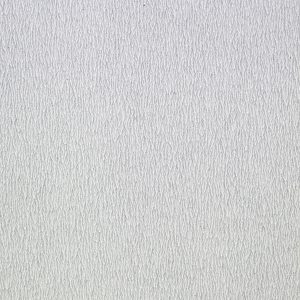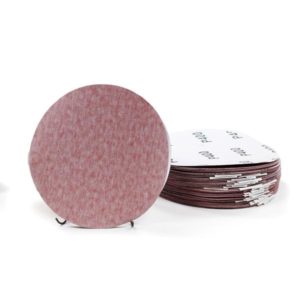
Have you ever been frustrated with sandpaper quitting before the job was finished? As you turn over the sandpaper, it is so ‘gummed’ up with residue that it’s hardly recognizable as sandpaper! Surely, someone has tackled this problem with ingenuity? The answer is yes: it’s called non-loading sandpaper.
The term “loading” is used in the sandpaper industry to refer to a product that can be clogged or gummed up due to residue filling up the inter-spaces between abrasive particles with small particles of the material being sanded, making the sandpaper work much harder or to even ruin it (end lifespan).
Consequently, “non-loading” sandpaper refers to a product that has a special, chemical coating of stearate lubricant powder, a white solid that is water repellent (Non-loading sandpapers are recognizable by their bluish-white coloration). Usually it is in the form of a zinc stearate soap (a metal “salt” of a fatty acid lubricant) that “sheds” along with the residue during sanding, resulting in a sandpaper doesn’t get clogged. These applications exploit its “non-stick” properties, leading to less maintenance of the sandpaper. Patented in 1956, non-loading paper was originally developed for the furniture industry to prevent gumming and clogging of sandpaper while manufacturing furniture.
Another benefit of non-loading sandpaper is this: sanding can generate great amounts of heat, potentially damaging the surface of the material being worked on. The zinc stearate coating of the non-loading sandpaper will reduce this frictional heat to dissipate heat buildup so that the surface is not marred and that abrasives can cut cooler.
There are some drawbacks to non-loading sandpapers. First, sandpapers with non-loading coating are not intended for sanding in wet conditions. This includes using on surfaces with water-based finishes. Second, non-loading sandpapers are usually more expensive than regular sandpapers. However, the extra cost is more than worth the convenience of longer lasting, more efficient, and time-saving product.
It is an excellent choice for dry sanding and finishing wood, metal, plastic or other soft materials. One common application for non-loading sandpaper is for stripping paint; since it won’t clog with debris, the sandpaper lasts much longer.

Now, non-loading sandpaper comes in various forms such as sandpaper, sanding discs, and adhesive rolls for use with power sanders. Also, they are available in grits from P60 to P400. Sandpapers with aluminum oxide and silicon carbide are coated with zinc stearate to form non-loading sandpapers.
Please check out PAC COM’s collection of non-loading sandpaper and sanding discs.
